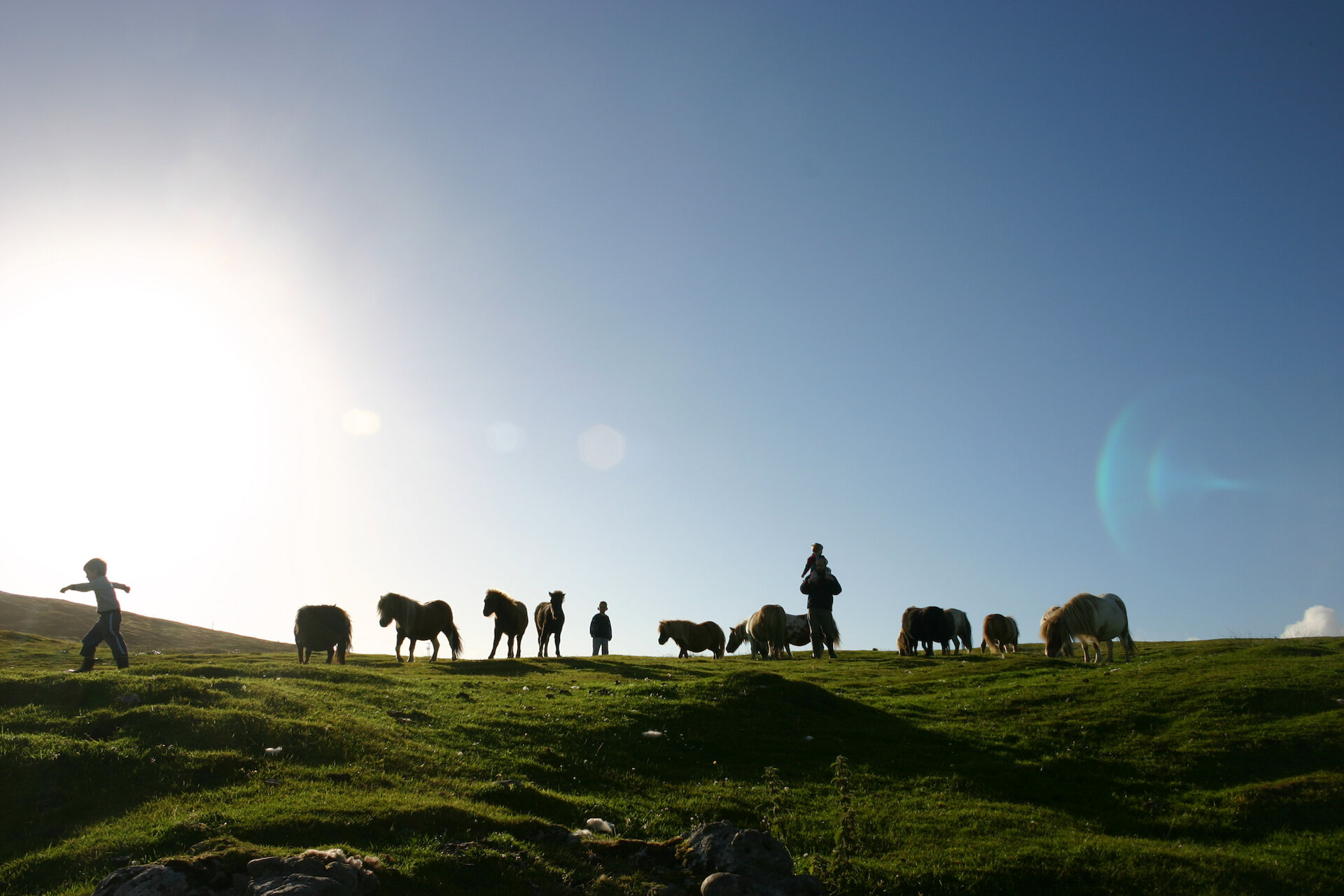Where can I see Shetland ponies?
Appearing to roam wild across Shetland, the ponies are, in fact, all owned and tended to by local crofters. Visitors will be able to spot Shetland ponies grazing on the hills and by the roadside. They can generally be seen in the West Mainland, Scalloway, Tingwall, Dunrossness and the island of Unst.
During August, the local agricultural shows take place, providing excellent opportunities for visitors to see these wonderful ponies in action. Attracting exhibitors from throughout the islands, they include many in-hand classes for adult ponies, foals and young stock, as well as ridden, driven and young handler classes for the performance ponies.
